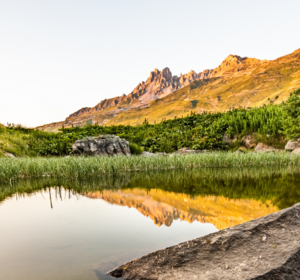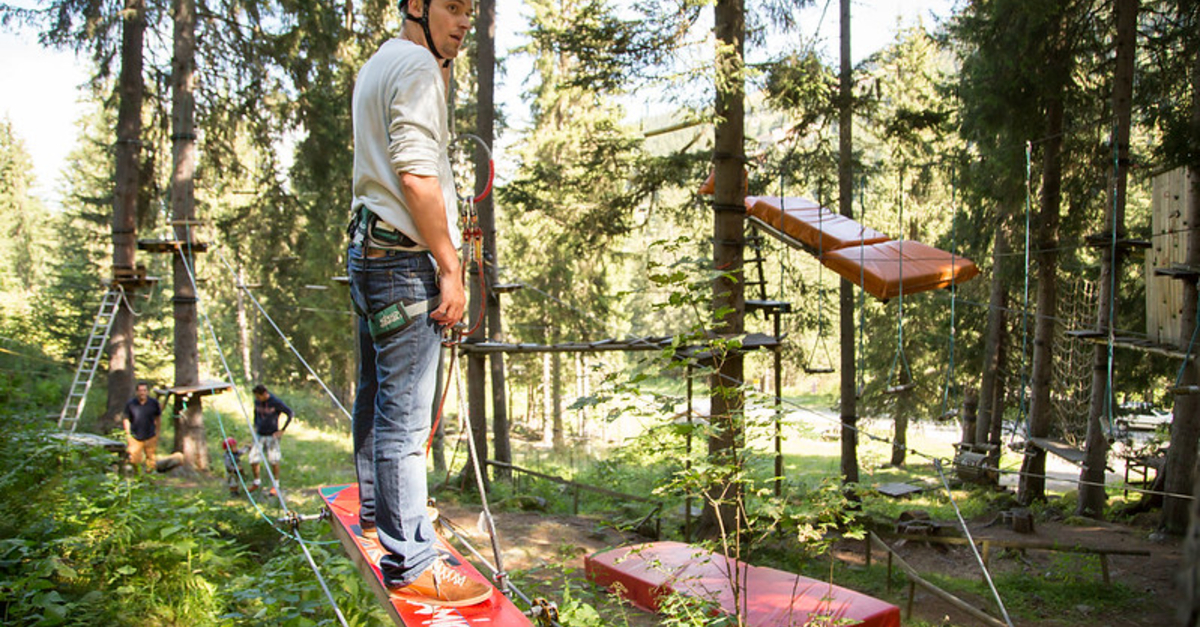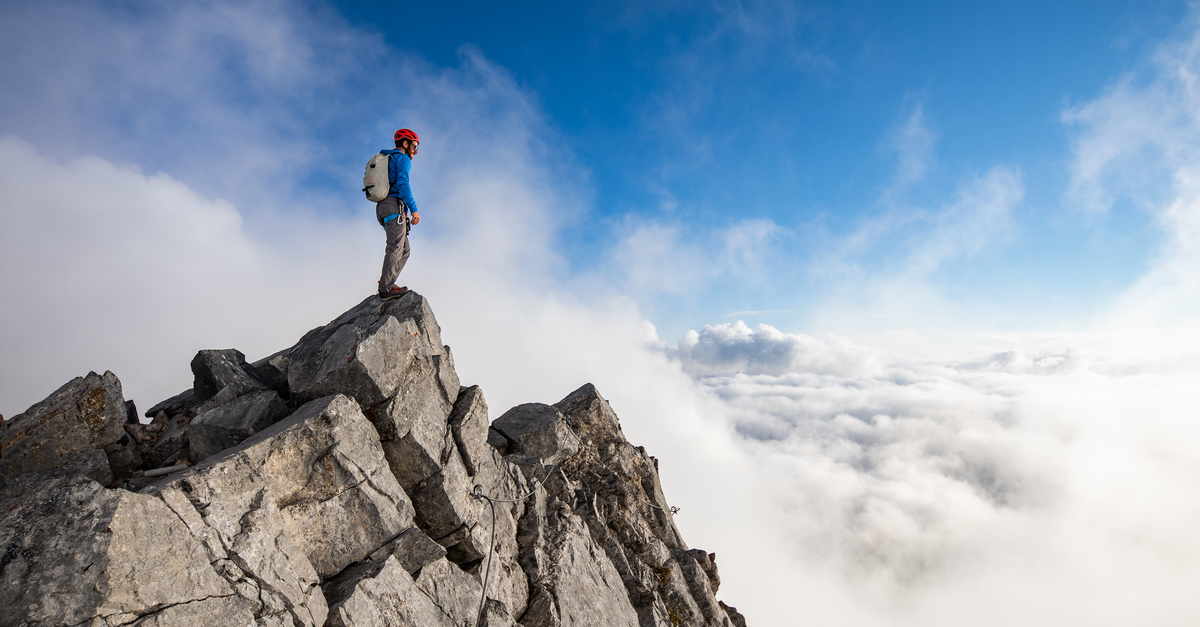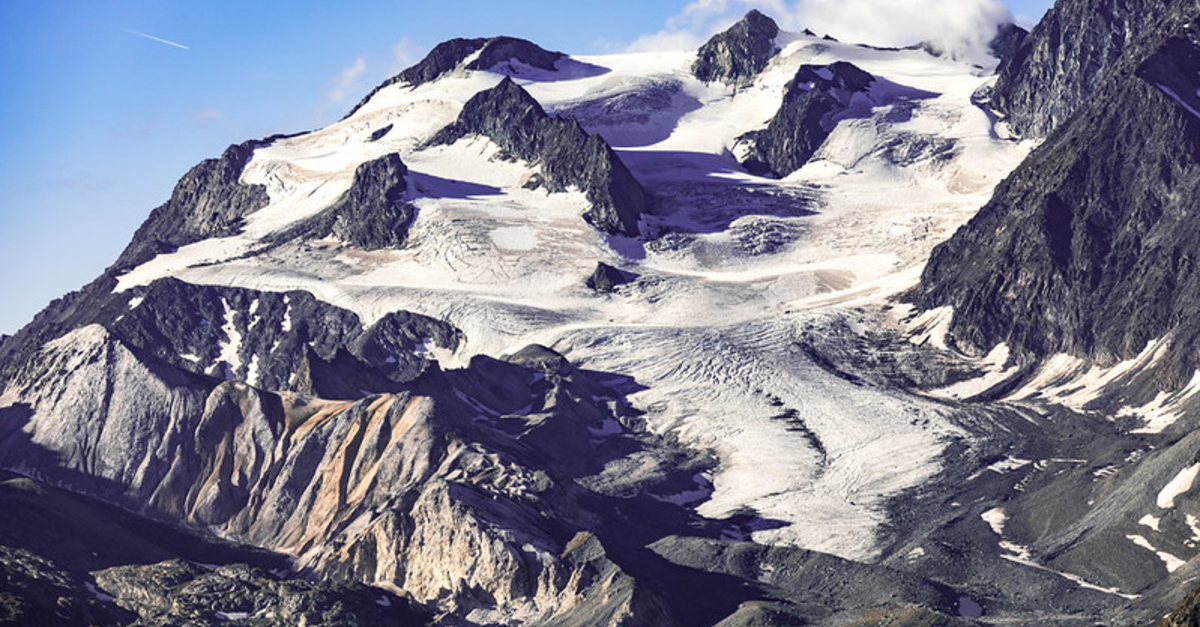
Top mountain activities in summer, for a refreshi…
This summer, why not choose the cool of the mountains rather than the crowds of the…
High-wire adventure courses, via ferrata, climbing, glacier trekking, mountaineering, all these sports have one thing in common: they allow you to defy the laws of gravity. Take on a vertical challenge and leave the hiking trails far below you by setting out on routes specially prepared for you by professionals.
Tree-top adventure courses, via ferrata and climbing are excellent ways of becoming familiar with the equipment (carabiner, lanyard, harness, helmet etc.) and also discovering the sensations of climbing and mountain sports. It’s a great idea to contact the Méribel mountain guides’ office which organises many outings suited to all levels. These sports are a goal in their own right, but they can also help you to progress towards mountaineering, a more demanding but also very rewarding activity.
All these climbing sports are available in Méribel, but do you know which one is best for you? Here is what you need to know to make the right choice and plan your summer programme.

A high-wire adventure course is certainly the best activity for getting used to following routes high above the ground. Thanks to a system which allows you to attach yourself to a safety cable at all times and clear explanatory signs for each challenge, you can move independently at your own pace along cables, footbridges and monkey bridges. All safety equipment is provided on site.
At the Bois d’Arbin forest adventure course, located next to the Doron play area, children aged 6 and over (accompanied by an adult) can complete the Green course. The Blue, Red and Black courses may be used by children of 1.40m and above. For the little ones, the Mini-Adventurers course is available from the age of 3.
Méribel Aventure located at le Bois d’Arbin where 80 challenges are waiting for you including snowboarding in the trees, a suspended bike, a tree house and a zip wire…
Le Refuge de la Traye which offers a wide range of activities including several tree-based courses including a zip line, Tarzan lianas, footbridges and monkey bridges…

While a high-wire adventure course is usually located in a forest, a via ferrata takes you to the rocky parts of the mountain. As the name suggests, a via ferrata is a route fitted with metal equipment such as cables and rungs. These allow you to advance safely on high rock faces. Permanent self-belaying (the system which means you are always safely attached) means you can enjoy your vertical ascent without risk.
Beginners are strongly advised to do a via ferrata with a climbing instructor or guide to learn the techniques that will allow them to move around in safety. You can hire the appropriate equipment (lanyard with shock absorber, helmet and harness) from the sports shops in Méribel.
The level of difficulty of a via ferrata route is indicated by its rating which goes from F (easy) to TD (very difficult). If you want to do a via ferrata with children, it is a good idea to choose one rated F (easy) or PD (not very difficult).
This is for you if you want to get up high in the mountains to enjoy stunning views of the 3 Valleys without having to learn rock climbing techniques. The via ferrata is an excellent intermediate step before moving on to rock climbing, but it can also be a goal in itself, as the French Alps offer hundreds of via ferrata routes which allow you to explore the mountains in a different way than hiking!
La Rosière via ferrata, which stretches around the magnificent Lac de la Rosière. Rated PD (not very difficult), it takes 2 to 2½ hours to complete. There is a short walk on foot from the car park to the start of the via ferrata.
The Dent de Burgin via ferrata is the highest via ferrata in Europe! Rated D (difficult), this via ferrata requires 3 hours of ascent and 1½ hours of descent. Access is via the Pas du Lac cable car, which takes only 15 minutes.
For this activity, the only equipment fixed onto the rock is that which allows you to attach your carabiners and rope. To move over the rock face, there are no rungs, steps or bridges, only your hands and feet on the rock. You will use the rock’s natural lumps and bumps to reach the top of the cliff. Hence rock climbing requires knowledge of how to climb and how to do it in safety. Méribel’s climbing instructors and guides can teach you how to rope up, belay your partner, use carabiners, place your feet correctly on the wall, and transfer your weight etc.
For a gentle introduction to climbing, the indoor wall at the Parc Olympique is an excellent choice. It will allow you to discover climbing in a very safe environment before you set out on the outdoor cliffs located in Courchevel or Pralognan-en-Vanoise.

In this activity, your ascent takes place at high altitude. Equipped with crampons and an ice axe, you can set off on the glaciers to tackle the 3,000m-high mountains of the Vanoise. Glacier trekking is restricted to people either with a great deal of experience or with a guide so as to avoid the danger posed by crevasses and seracs.
Children aged 12 and over are welcome on introductory glacier hikes such as the Polset dome or the Gébroulaz, both of which are situated above 3,500m in altitude. For this activity, Méribel’s mountain guides will accompany you on every step of your journey to ensure your ascent is a total success.
For those who like to challenge themselves further, Méribel offers you mountaineering routes known as “rocky” (if they only take place on rock) or “mixed” (if they include both snow and rock): the Aiguilles de la Vanoise, Pointe de la Grande Glière, or the Dôme des Glaciers – summits which will delight any mountain lover.